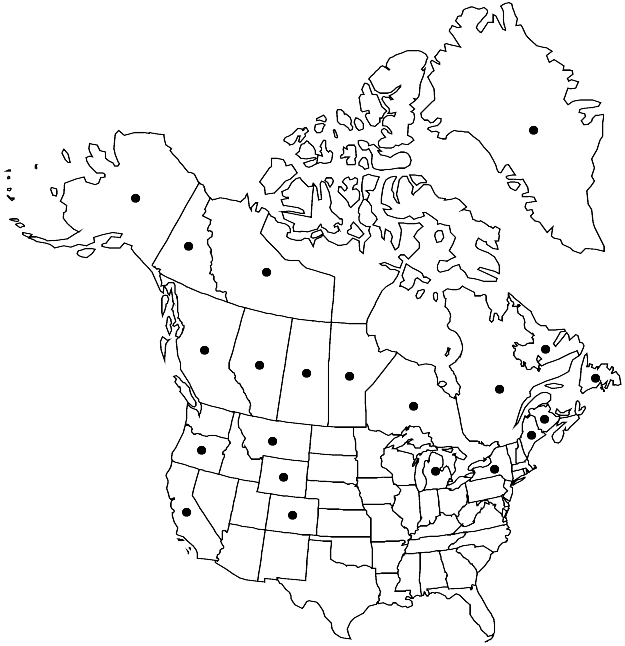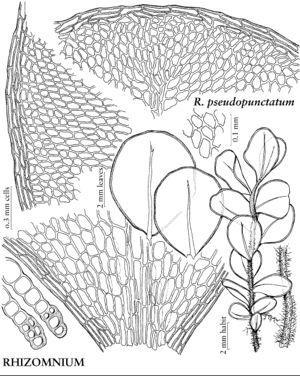Rhizomnium pseudopunctatum
Ann. Bot. Fenn. 5: 143. 1968.
Plants (2–) 3–6 (–9) cm. Stems dark red to reddish-brown when old; micronemata present. Leaves yellow-green or dark green, somewhat contorted when dry, broadly obovate, elliptic, or occasionally orbicular, 3–6 (–7) mm; margins green or reddish, 1-stratose; apex rounded or occasionally obtuse, truncate, or retuse, rarely short-apiculate; costa 7/8 leaf length to subpercurrent or rarely percurrent, sometimes 2-fid distally; medial laminal cells elongate, (45–) 60–90 (–100) µm, weakly collenchymatous, walls weakly pitted; marginal cells linear, ± rectangular, or rhomboidal, in 1–2 (–3) rows. Sexual condition synoicous. Seta (1.3–) 2–5 cm. Capsule ovate or subglobose, 1.5–2.5 mm; operculum conic-rostrate; exostome dark-brown, lamellae less than 20. Spores (28–) 40–50 µm.
Phenology: Capsules mature spring–summer.
Habitat: Wetlands, calcareous and rich in nutrients, swamps, fens, seeps on moist soil, peat, humus
Elevation: low to moderate elevations
Distribution

Greenland, Alta., B.C., Man., N.B., Nfld. and Labr., N.W.T., Ont., Que., Sask., Yukon, Alaska, Calif., Colo., Maine, Mich., Mont., N.Y., Oreg., Wyo., Europe, Asia
Discussion
Rhizomnium pseudopunctatum is the sole synoicous species of the genus in the flora area. See discussion for this species under 5. Rhizomnium magnifolium.
Selected References
None.
Lower Taxa
"subpercurrent" is not a number.
